 Italiano-
English-
日本語
Italiano-
English-
日本語 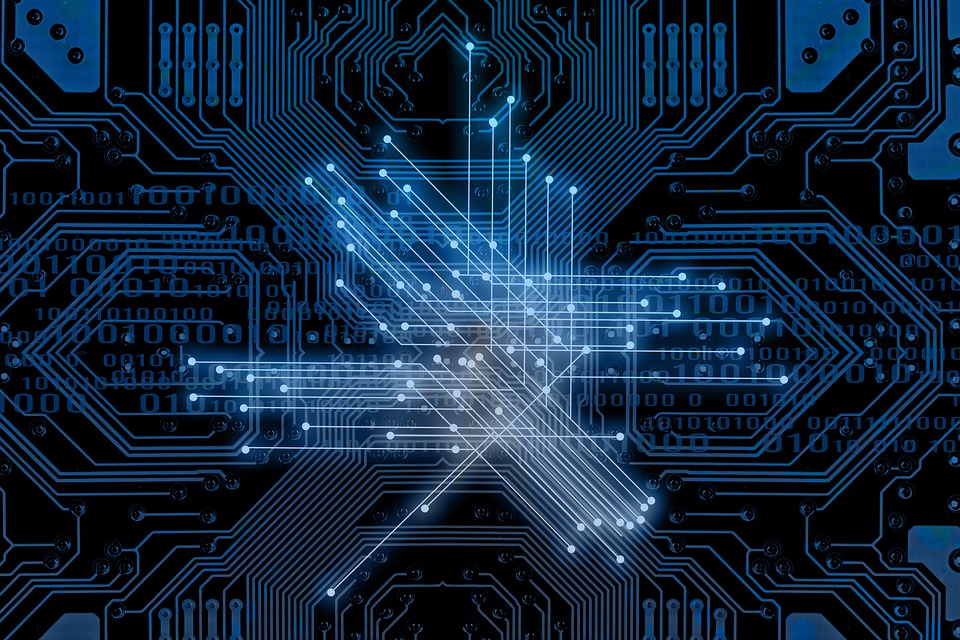
Welcome to the page dedicated to the computer science
I will look into this page, as it is in the spirit of this site, to define in simple words and suitable for all the immense world behind the word "computer science" as always is not an easy task but I will also try this case. Of course, it is impossible to condense a vast subject in this small text, but if you are going to deepen or need professional advice (with my experience in the field since 1979) you can contact me via the "Contacts" page.
On this page we will discuss the definition of computer science and hardware of computer systems, for software and computer networks I have prepared separate pages that you can reach by clicking on the links above or below this document.
Computer science is the science that
deals with the processing and processing of data, information,
physical quantities and services in an automated manner, to do
so with electronic systems (computer systems) formed by billions
of
logical gates,
that need digital or numeric signals to function,
Have only two states, status 0 or
off, and status 1 or on, of course, to acquire and process
analogue signals (see page "electronics"),
you must first convert them digitally or digitally using an
A / D type converter From analog to digital. The converter converts signals with continuous amplitude and frequency variation in a zero sequence and one representing the input signal. At the end of the processing, the digital signals can be converted, if necessary, in analogue by D / A converters, ie digital to analog, which perform the reverse operation, ie they transform a sequence of zero and one (or on-off, or maximum voltage Minimum voltage) in an analog signal (value between 0 and infinity) corresponding to the digital sequence, for further information you can contact me through the "Contact" page.
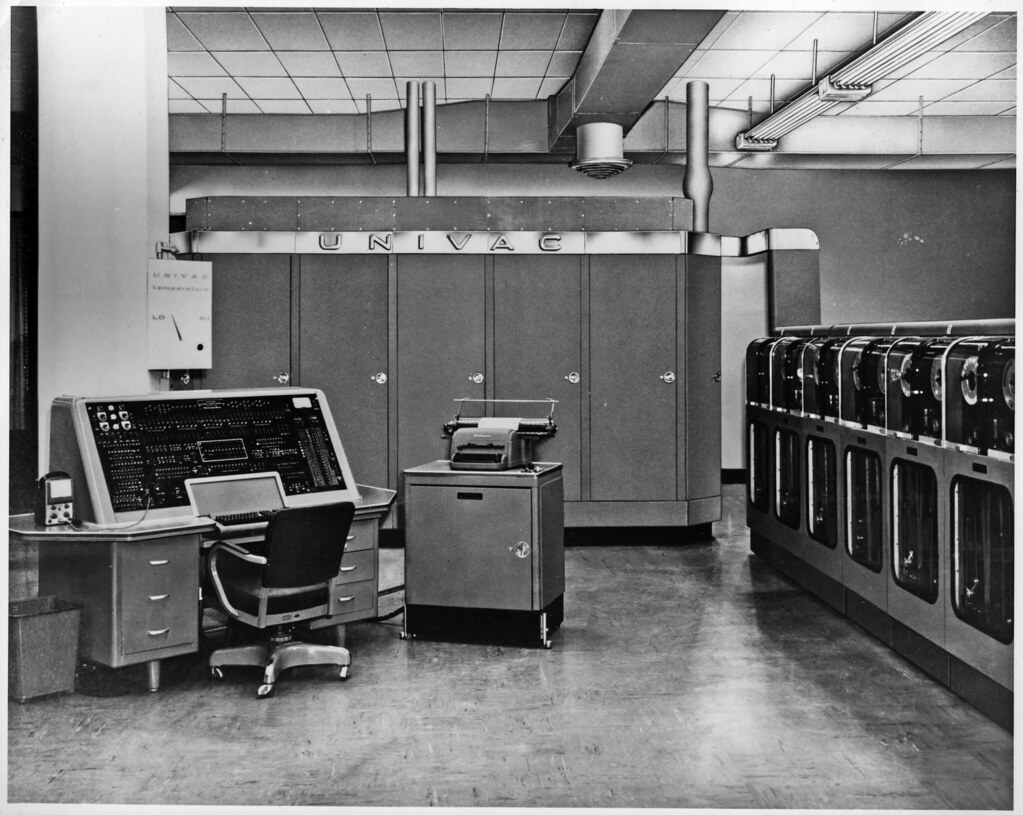
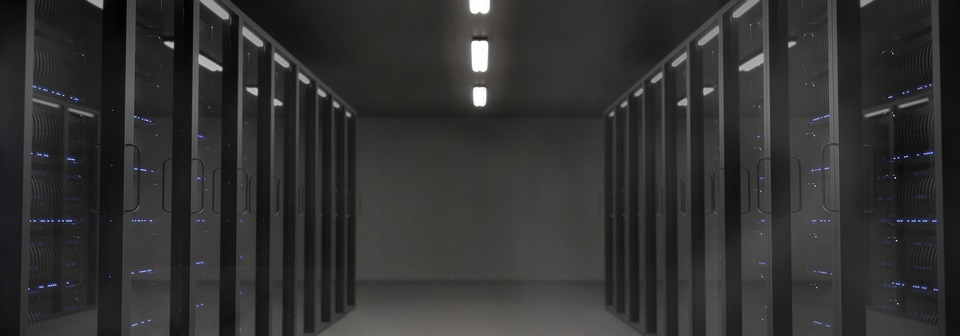
First commercial computer, UNIVAC1 IT system of a well-known company
Computer science and computer systems have evolved mainly in the field of telecommunications and information, where it almost completely supplanted the traditional systems, thanks to the possibility of data processing, the high immunity to digital signal disturbances and the progress of the digital system, Electronics in miniaturization of circuits and containment of manufacturing costs.
The advancement of electronic circuits has therefore enabled the release of computer science from a strictly professional field, and to enter as a household appliance in every home and office by P.C. Or personal computer, has made it available to anyone with the digital world with its universe of information and opportunities, recently the appearance on the market of battery-powered and touch-sensitive touchscreens such as smartphones and tablets, expanded the range Of available opportunities while allowing for external portability.
A / D type converter From analog to digital. The converter converts signals with continuous amplitude and frequency variation in a zero sequence and one representing the input signal. At the end of the processing, the digital signals can be converted, if necessary, in analogue by D / A converters, ie digital to analog, which perform the reverse operation, ie they transform a sequence of zero and one (or on-off, or maximum voltage Minimum voltage) in an analog signal (value between 0 and infinity) corresponding to the digital sequence, for further information you can contact me through the "Contact" page.


First commercial computer, UNIVAC1 IT system of a well-known company
Computer science and computer systems have evolved mainly in the field of telecommunications and information, where it almost completely supplanted the traditional systems, thanks to the possibility of data processing, the high immunity to digital signal disturbances and the progress of the digital system, Electronics in miniaturization of circuits and containment of manufacturing costs.
The advancement of electronic circuits has therefore enabled the release of computer science from a strictly professional field, and to enter as a household appliance in every home and office by P.C. Or personal computer, has made it available to anyone with the digital world with its universe of information and opportunities, recently the appearance on the market of battery-powered and touch-sensitive touchscreens such as smartphones and tablets, expanded the range Of available opportunities while allowing for external portability.

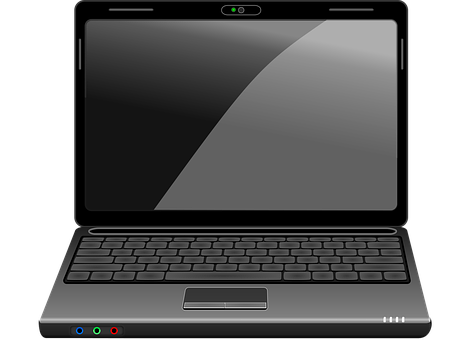
Personal computer with peripherals PC Laptop, or Notebook
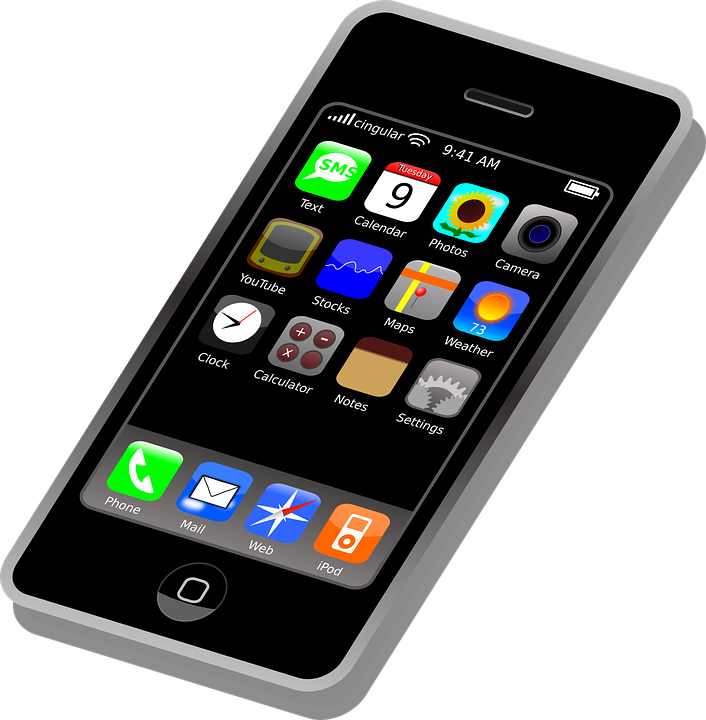

Smartphone, last generation Tablet, last generation
IT systems are formed by two inseparable elements, hardware and software.
Hardware ( hard, concrete) can be identified in the logical electronic circuits found within smartphones or tablets. The keyboard, mouse and monitor hardware are part of the hardware.
The software or application (app) is instead the digital information or content that we need to process or use (or allow us to process through the hardware) and that can be stored in a hard drive or in a memory USB or other computer support.
Software is part of the operating systems, which we will deal with on a separate page, and the word processing suite.
As mentioned earlier, computer technology is used for its operation of electronic systems, in the case of the PC, which is the computer system that concerns us most closely, and from which all other data processing and utilization systems Of the contents, the circuitry has now standardized and is simplified with the block diagram shown in the figure.
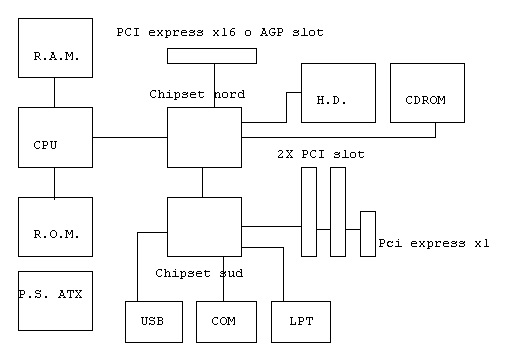
The CPU (central processing unit) is the component commonly called microprocessor, it represents the heart of the PC, in it data is processed in the form of sequences of digital signals, and is a very complex integrated circuit LSI (large scale integration) made up of millions of Transistors and MOSFETs, while in the tablet and smartphone sector there are various companies that produce CPUs, few have the know-how to build such a component in the PC sector, currently there are only two in the world who have the resources to develop CPU for PC at high levels. The CPU uses other components to function, they are:
RAM (random access memory), is directly connected to the CPU, provides quick access and is used to process data
in real time. It is a volatile memory and its contents are lost because it is erased and rewritten continuously during its operation, the amount and quality of the RAM to install depends on the complexity of the data to be processed, as a general rule if it installs as much as possible compatible With system costs and energy consumption.
ROM (read only memory) is a read-only memory, directly connected to the CPU, which is not involved in the digital data process, but serves as a genetic kit for the PC. It stores hardware configuration data, contains BIOS and CMOS, and can not change the content ( no in theory, yes in practice).
The north and south chipsets are the nodes between the CPU, the
data storage devices and the outside world, in fact, they
connect the universal serial bus (USB)
ports to which we can connect now,
COM (
Serial port) and the
LPT
(parallel port), the cd-dvd burner and hard disk drive are
connected to the north chipset, and can also contain built-in
video conversion unit (video card)
Audio processing unit (sound card).
The hard disk is a complex and delicate electromechanical component, it is made up of various plates kept in rotation at high speed by a precision electric motor, and on which a magnetizable substance is deposited, and by a head that continuously slides on them , the head writes a sequence of 0 (demagnetized substance) and 1 (magnetized substance) corresponding to the data to be memorized and conserved. For some time solid state hard drives (SSD) have been created, which are built using memories of FLASH types, writable for a certain number of cycles, they are gaining more and more foot because they allow read (not write) speeds more high compared to traditional electromechanical disks, but their cost is high compared to electromechanical hard disks, and reliability suffers from the limitations of solid state memory technology, in essence you may find yourself in the situation of having lost your data for a moment to the other if the memory goes into lockout and refuses to answer.
The PC also has a certain amount of slots (slot) that allow expandability, that is to add cards that can perform particular functions and thus make the system suitable for specific applications.
Many of the aforementioned components are housed on a main electronic board called a motherboard or mainboard, which houses virtually any electronic circuitry represented in the block diagram that you can find more on, in addition to the voltage stabilizers for cpu and RAM and the interfacing ports with the outside world.
All is powered by an ATX power supply that provides the various voltages required for the CPU and its components to function, it must be of good quality and must maintain stable and clean voltages, the required values are usually 3,3V/ 5V and 12V.
The PC itself is connected through the ports connected to the chipset, other devices called peripherals, they are hardware electronic devices that allow you to give commands to the PC (input peripherals) or to use processed data (output peripherals).
The mouse is an input peripherals. The keyboard and the scanner always, on the contrary are output peripherals the monitor and the printer.
Here are some magnifying images that will allow you to understand what we have said so far.
The hard disk is a complex and delicate electromechanical component, it is made up of various plates kept in rotation at high speed by a precision electric motor, and on which a magnetizable substance is deposited, and by a head that continuously slides on them , the head writes a sequence of 0 (demagnetized substance) and 1 (magnetized substance) corresponding to the data to be memorized and conserved. For some time solid state hard drives (SSD) have been created, which are built using memories of FLASH types, writable for a certain number of cycles, they are gaining more and more foot because they allow read (not write) speeds more high compared to traditional electromechanical disks, but their cost is high compared to electromechanical hard disks, and reliability suffers from the limitations of solid state memory technology, in essence you may find yourself in the situation of having lost your data for a moment to the other if the memory goes into lockout and refuses to answer.
The PC also has a certain amount of slots (slot) that allow expandability, that is to add cards that can perform particular functions and thus make the system suitable for specific applications.
Many of the aforementioned components are housed on a main electronic board called a motherboard or mainboard, which houses virtually any electronic circuitry represented in the block diagram that you can find more on, in addition to the voltage stabilizers for cpu and RAM and the interfacing ports with the outside world.
All is powered by an ATX power supply that provides the various voltages required for the CPU and its components to function, it must be of good quality and must maintain stable and clean voltages, the required values are usually 3,3V/ 5V and 12V.
The PC itself is connected through the ports connected to the chipset, other devices called peripherals, they are hardware electronic devices that allow you to give commands to the PC (input peripherals) or to use processed data (output peripherals).
The mouse is an input peripherals. The keyboard and the scanner always, on the contrary are output peripherals the monitor and the printer.
Here are some magnifying images that will allow you to understand what we have said so far.
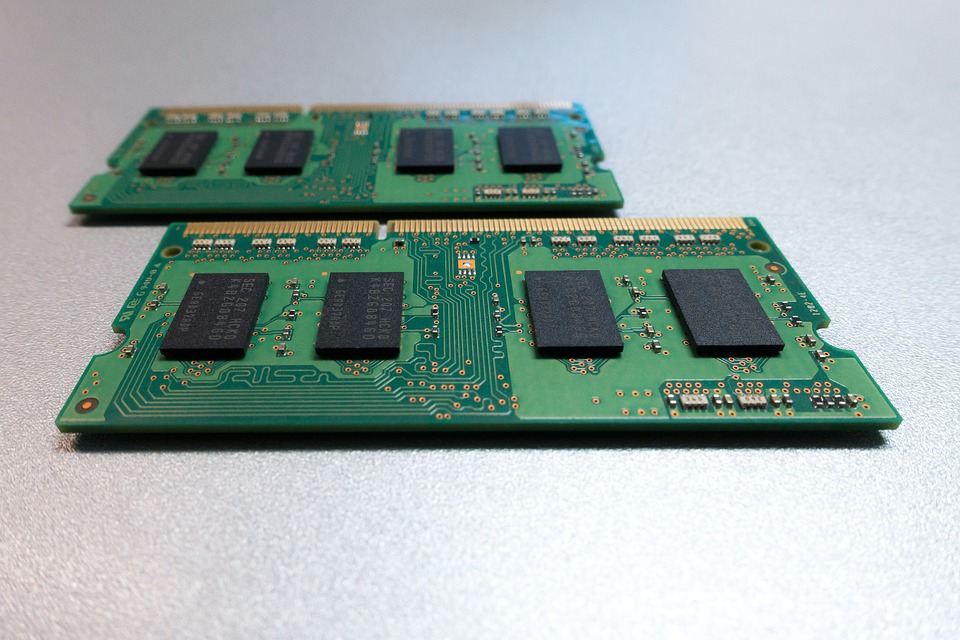

RAM SODIMM module Outdated and current data storage components
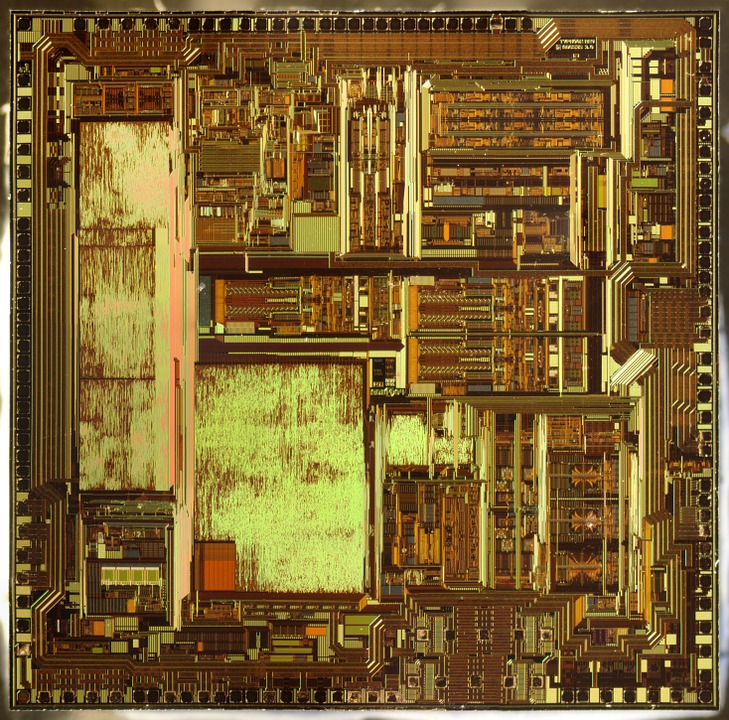

CPU view inside with microscope Mainboard with component identification
The digital architecture of the PC has now become standard for almost all electronic equipment, new generation LCD televisions, DAB radios, tablets, smartphones and in general all the equipment that has an onboard CPU foresees even if in small a operation as it is that of the PC, if you need to process an analog signal you convert it to digital, this is because the PC clone digital architecture can take advantage of all the advantages connected to it, such as the push miniaturization of integrated circuits and electronic components, large-scale production with consequent reduction of production costs, an easy and smart approach due to the logic programmed instead of the wired logic used so far, in practice with the change of the architecture management software only and few other hardware changes the same circuit becomes a radio (with the addition of a radio frequency chip), an instrument measuring unit, a tablet, a smartphone, an LCD TV, an LCD monitor, an MP3 player-recorder, a control unit for a traditional and hybrid electronic fuel injection engine and so on, adapting the management software and the hardware as needed.
In the images below, you will find confirmations of what has just been explained.
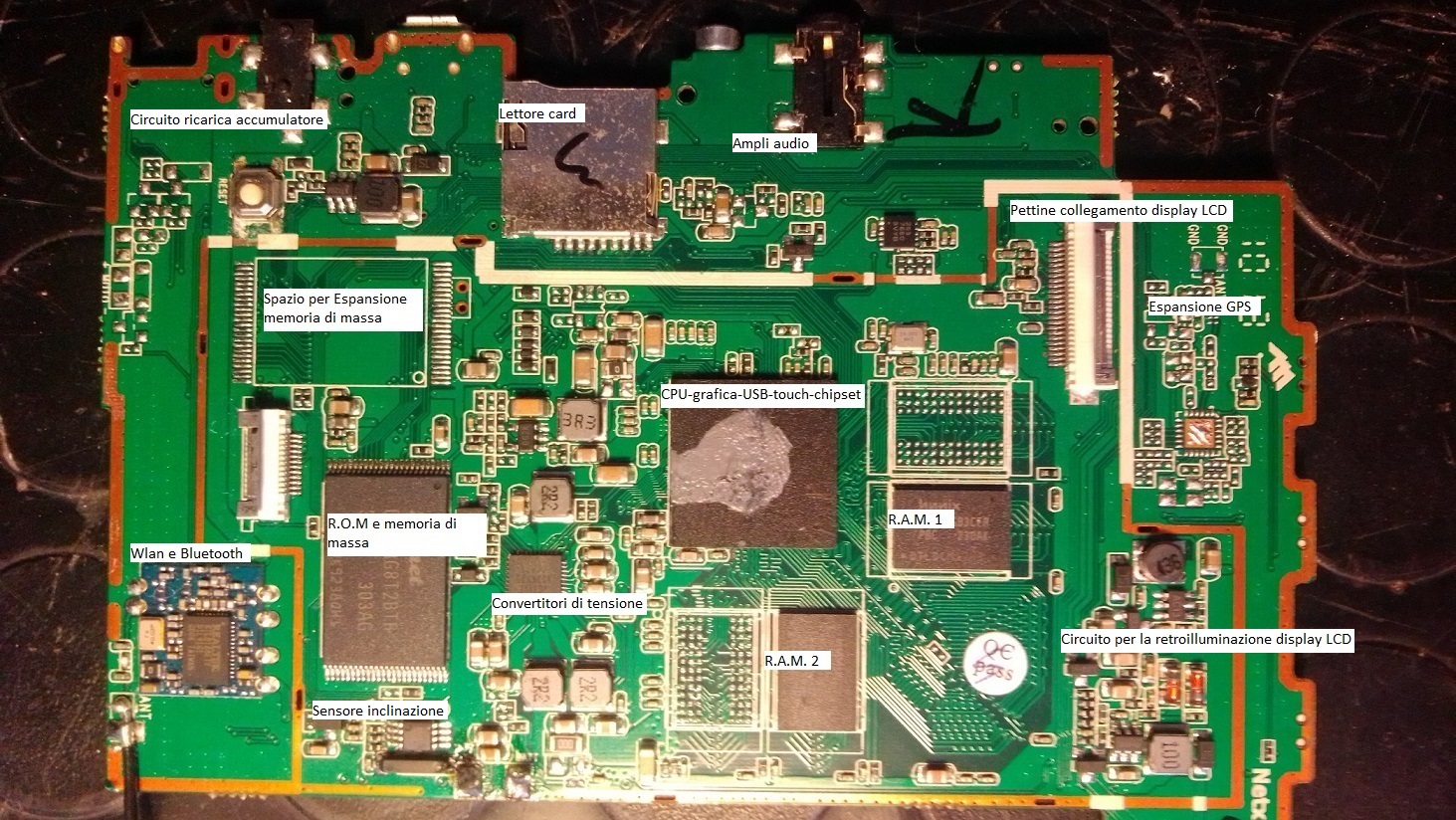
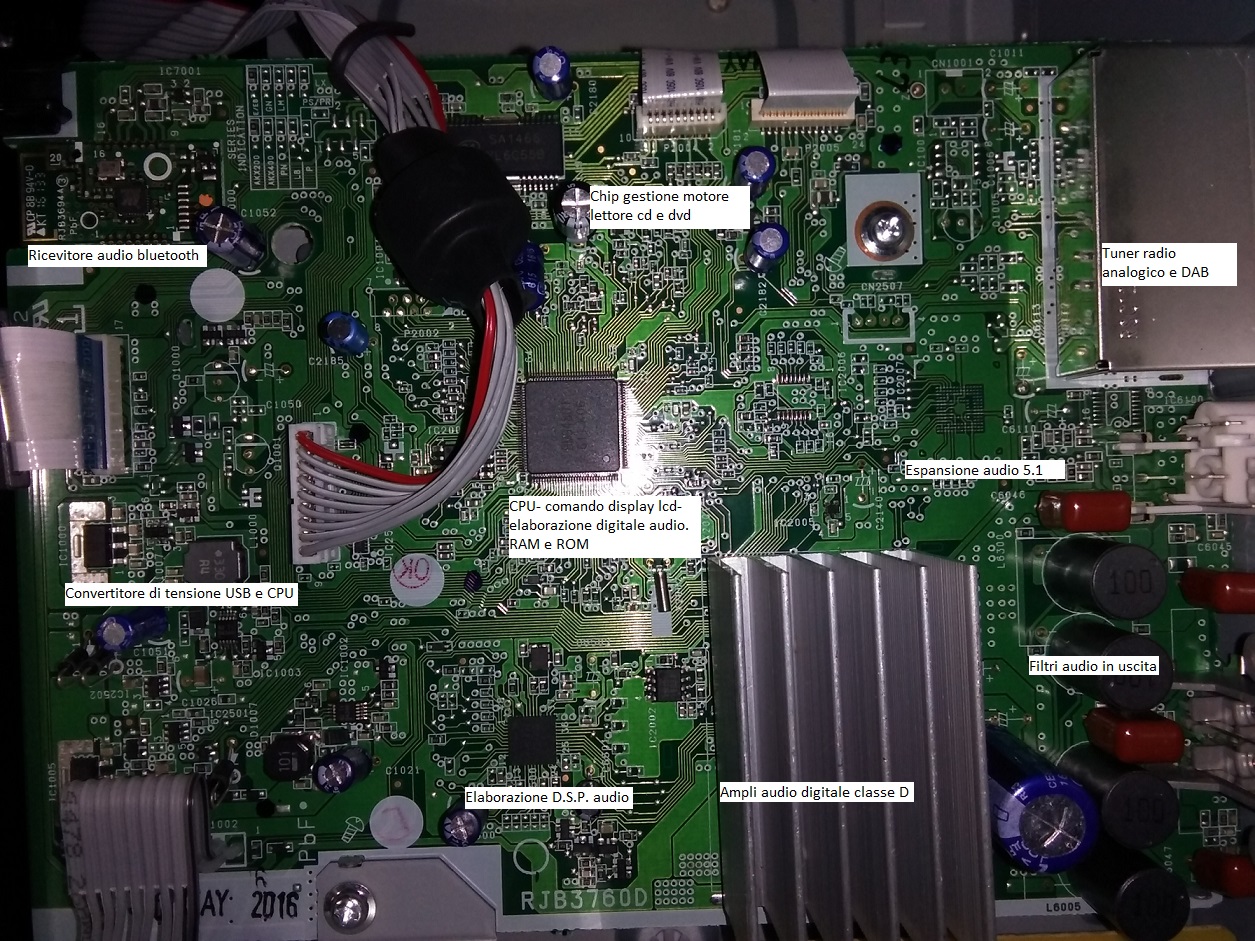 Processing card of
a generic Tablet Radio-with fully digital elaboration
Processing card of
a generic Tablet Radio-with fully digital elaboration
Of course, I repeat that it is impossible to condense in this text all that is to say about computer science, but if you are going to deep or need professional advice, you can contact me through the "Contacts" page.
Informatics, Software and O.S., Computer network
Electronics, Active components, passive components
Radiowave
Seismo
Contacts
Who I am
Sitemap
Audio
Terms of use
Armando Caligiuri, Electronic senior expert, electronic and I.T. maintainer, I.T. consultant
Web master Armando Caligiuri
(C) 2024 V3.2